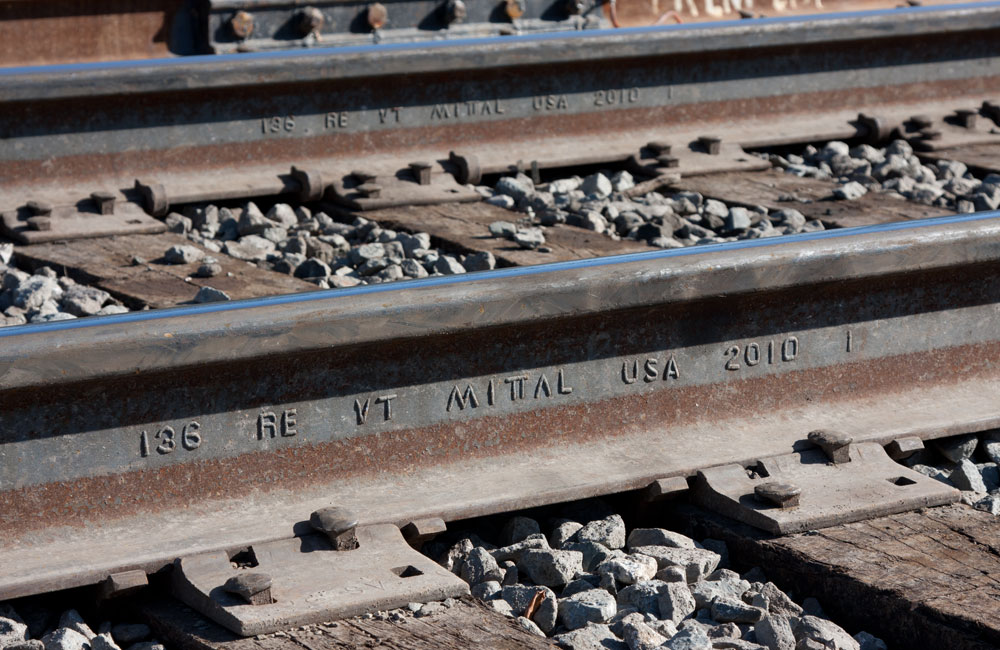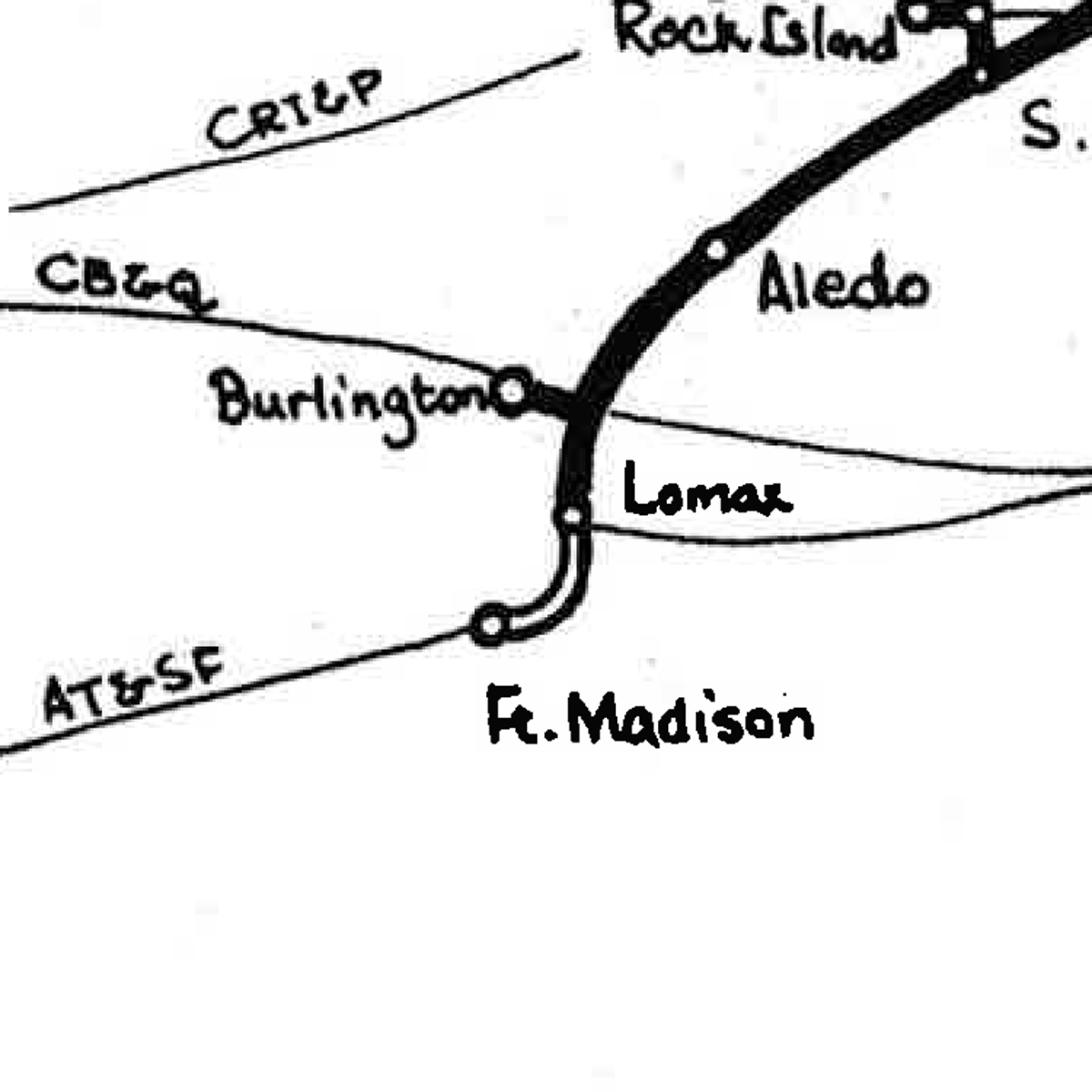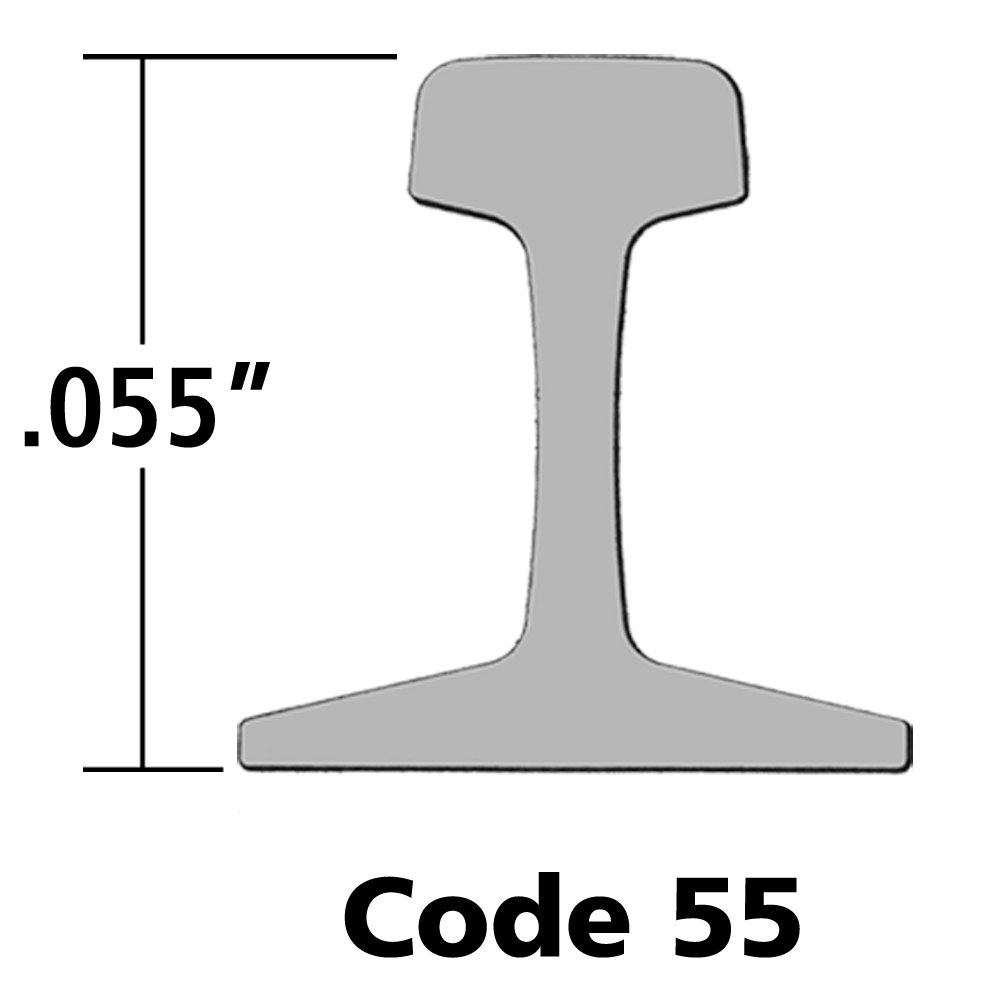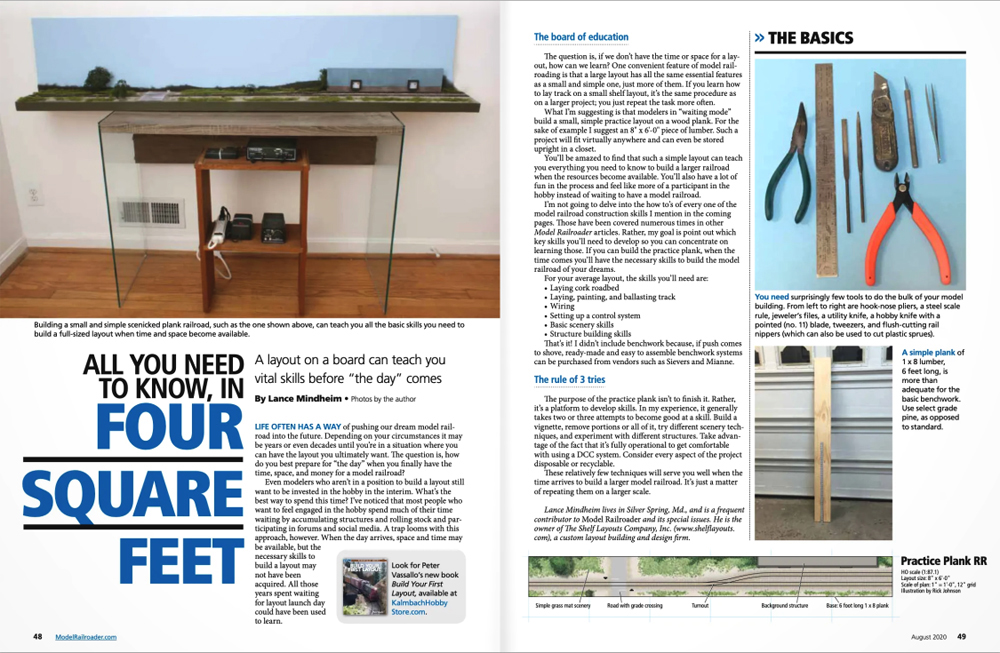
Q: What weight of rail (pounds per yard), does Code 83 represent? Maybe you could publish a table of weight vs. code vs. scale? – Jeff Schredder, Burbank, Calif.
A: The relation of model rail code to prototype rail weight depends, of course, on scale. I found in the March 1940 issue of Model Railroader a table that gave the prototype rail height for different weights of rail. It’s a simple matter to convert rail code (which is thousandths of an inch of rail height) to scale height, and from there check the table to find the closest prototype rail weight.
The most common HO scale rail codes are code 70, 83, and 100, corresponding to .07”, .083”, and .1”. Multiplying .07 by 87.1 (the proportion of HO scale) gives us a scale rail height of approximately 6”. According to the chart, 6” is the prototype height of 100 lb. rail, a fairly heavy branchline or light mainline rail. Code 83 comes out to 7-1/4”, which is a little bigger than code 140 rail, used only on the heaviest main lines. Code 100 rail is a scale 8-3/4” high, which is larger than the 8” height of 152 lb. rail, the heaviest rail used on any of the prototypes.
Since scale rail can be made only so small, N scale rail tends to be even heavier than the prototype. Codes 40, 55, and 80 are common. These correspond roughly to 6-3/8” (100 lb.), 8-3/4” (larger than 152 lb.), and 12-3/4” (much larger than anything used on the prototype).
Send us your questions
Do you have a question about model railroading you’d like to see answered in Ask MR? Send it to associate editor Steven Otte at AskMR@MRmag.com














The Pennsy used 155lb rail on its main lines; code 100 is closest for that but still a bit oversize.